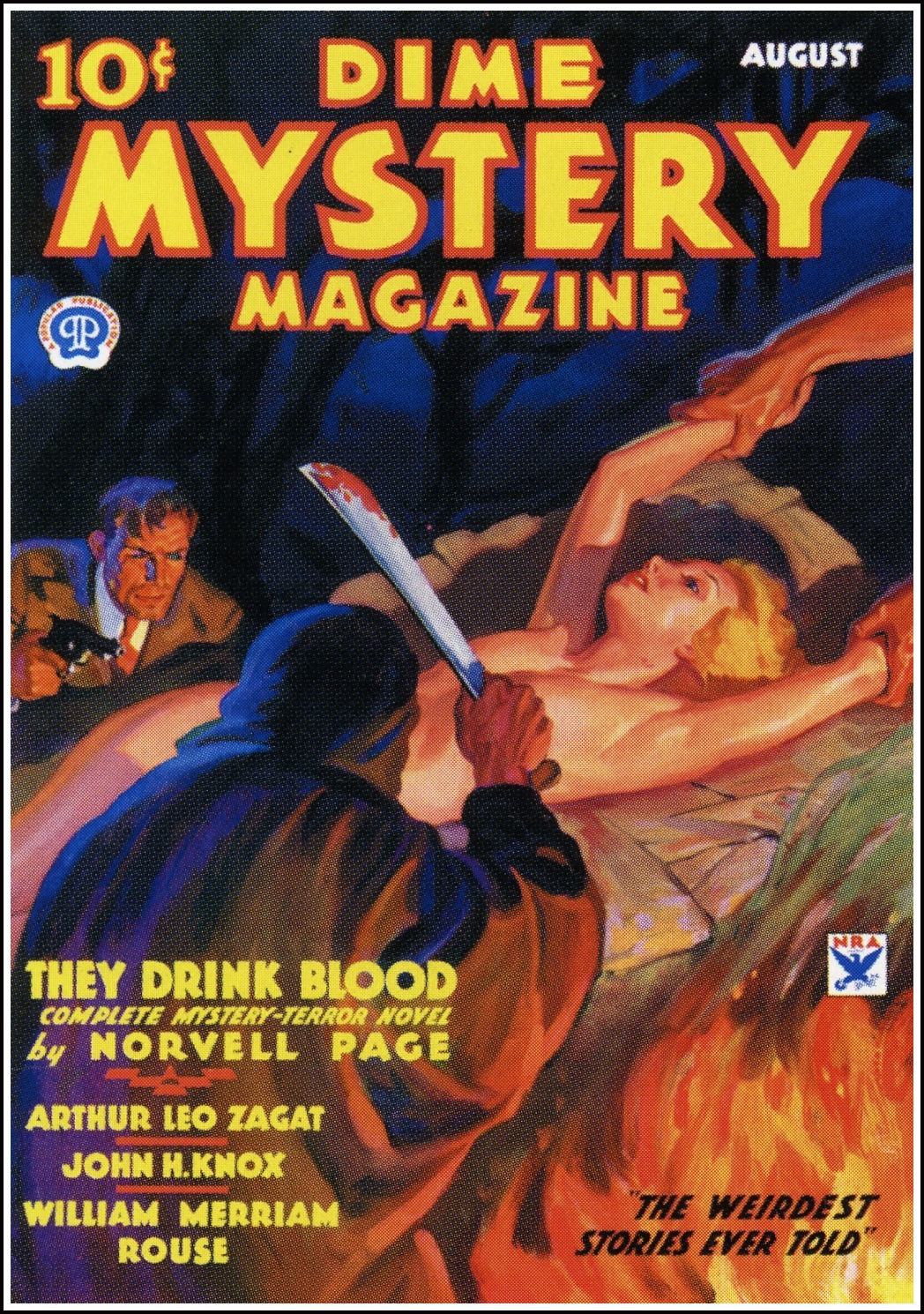Weird menace on:
[Wikipedia]
[Google]
[Amazon]
 Weird menace is a
Weird menace is a
 Weird menace is a
Weird menace is a subgenre
Genre () is any form or type of communication in any mode (written, spoken, digital, artistic, etc.) with socially-agreed-upon conventions developed over time. In popular usage, it normally describes a category of literature, music, or other for ...
of horror fiction
Horror is a genre of fiction which is intended to frighten, scare, or disgust. Horror is often divided into the sub-genres of psychological horror and supernatural horror, which is in the realm of speculative fiction. Literary historian ...
and detective fiction
Detective fiction is a subgenre of crime fiction and mystery fiction in which an investigator or a detective—whether professional, amateur or retired—investigates a crime, often murder. The detective genre began around the same time as sp ...
that was popular in the pulp magazine
Pulp magazines (also referred to as "the pulps") were inexpensive fiction magazines that were published from 1896 to the late 1950s. The term "pulp" derives from the cheap wood pulp paper on which the magazines were printed. In contrast, magazine ...
s of the 1930s and early 1940s. The weird menace pulps, also known as shudder pulps, generally featured stories in which the hero was pitted against sadistic
Sadism may refer to:
* Sadomasochism, the giving or receiving of pleasure from acts involving the receipt or infliction of pain or humiliation
* Sadistic personality disorder, an obsolete term proposed for individuals who derive pleasure from the s ...
villains, with graphic scenes of torture
Torture is the deliberate infliction of severe pain or suffering on a person for reasons such as punishment, extracting a confession, interrogation for information, or intimidating third parties. Some definitions are restricted to acts ...
and brutality.
History
In the early 1930s, detective pulps like '' Detective-Dragnet'', '' All Detective'', ''Dime Detective
Dime or Dimes may refer to:
Coins
* Dime (United States coin)
* Dime (Canadian coin)
Acronyms (DIME)
* Dark Internet Mail Environment
* Dense inert metal explosive
* Detroit Institute of Music Education
** DIME Denver, a branch of the Detroi ...
'', and the short-lived '' Strange Detective Stories'', began to favor detective stories with weird, eerie, or menacing elements. Eventually, the two distinct genre variations branched into separate magazines; the detective magazines returned to stories predominantly featuring detection or action, while the eerie mysteries found their own home in the weird menace titles. Some magazines, for instance ''Ten Detective Aces'' (the successor to ''Detective-Dragnet''), continued to host both genre variations.
Popularity and demise
The first weird menace title was '' Dime Mystery'', which started out as a straight crime fiction magazine but began to develop the new genre in 1933 under the influence ofGrand Guignol
''Le Théâtre du Grand-Guignol'' (: "The Theatre of the Great Puppet")—known as the Grand Guignol–was a theatre in the Pigalle district of Paris (7, cité Chaptal). From its opening in 1897 until its closing in 1962, it specialised in natura ...
theater. Popular Publications
Popular Publications was one of the largest publishers of pulp magazines during its existence, at one point publishing 42 different titles per month. Company titles included detective, adventure, romance, and Western fiction. They were als ...
dominated the genre with ''Dime Mystery'', '' Terror Tales'', and '' Horror Stories''. After Popular issued ''Thrilling Mysteries'', Standard Magazines, publisher of the "Thrilling" line of pulps, claimed trademark infringement. Popular withdrew ''Thrilling Mysteries'' after one issue, and Standard issued their own weird menace pulp, '' Thrilling Mystery''. In the 1930s, the Red Circle pulps, with '' Mystery Tales'', expanded the genre to include increasingly graphic descriptions of torture.
This provoked a public outcry against such publications. For example, ''The American Mercury
''The American Mercury'' was an American magazine published from 1924Staff (Dec. 31, 1923)"Bichloride of Mercury."''Time''. to 1981. It was founded as the brainchild of H. L. Mencken and drama critic George Jean Nathan. The magazine featured wri ...
'' published a hostile account of the terror magazines in 1938, "This month, as every month, the 1,508,000 copies of terror magazines, known to the trade as the shudder group, will be sold throughout the nation... They will contain enough illustrated sex perversion to give Krafft-Ebing
Richard Freiherr von Krafft-Ebing (full name Richard Fridolin Joseph Freiherr Krafft von Festenberg auf Frohnberg, genannt von Ebing; 14 August 1840 – 22 December 1902) was a German psychiatrist and author of the foundational work '' Psychopath ...
the unholy jitters.Bruce Henry, ''The American Mercury'', April 1938; quoted in Jones, ''The Shudder Pulps'', pp. 138–39."
A censorship backlash brought about the demise of the genre in the early 1940s.
See also
* Exploitation fiction * '' Marvel Science Stories''References
Further reading
* * {{Crime fiction Horror genres